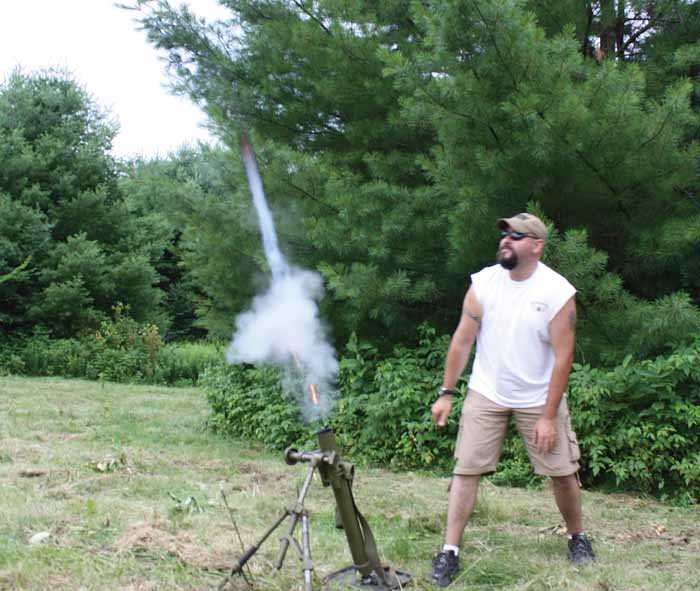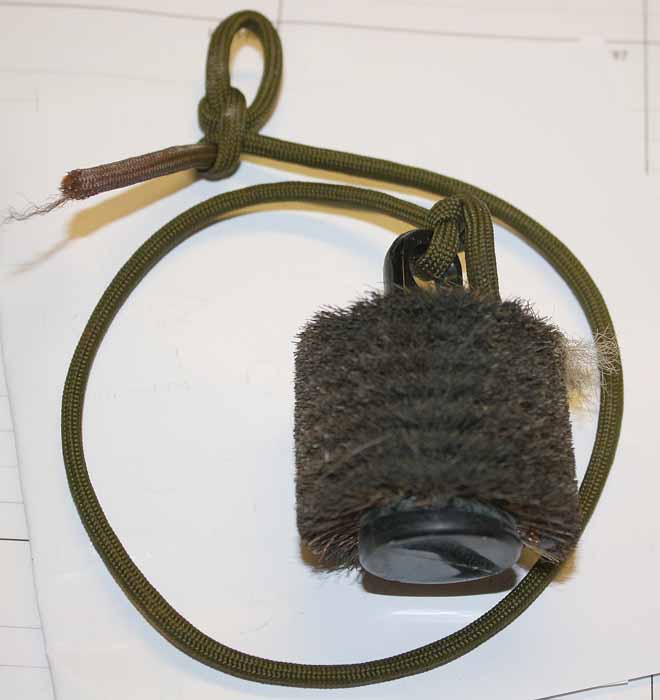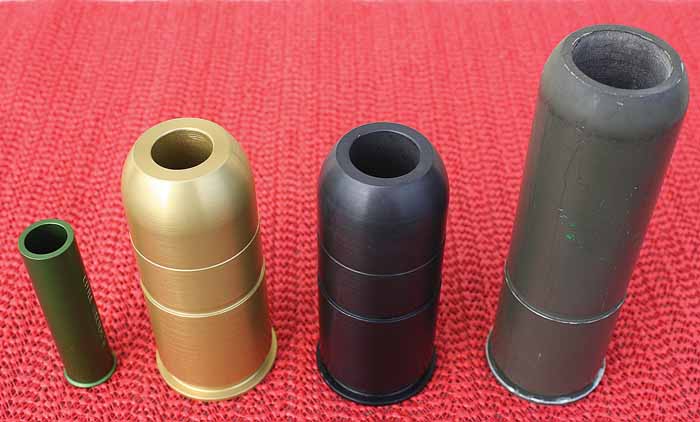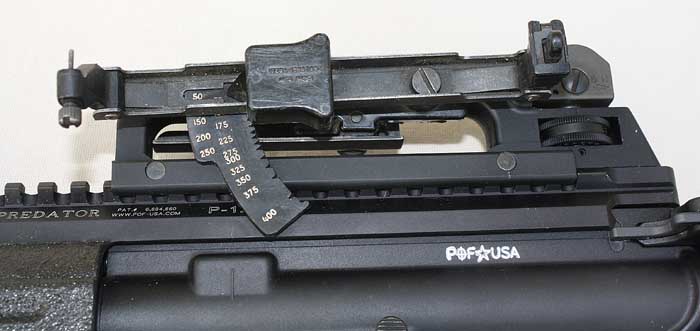By Jeff W. Zimba
An often overlooked segment of the Class III world is the recreational ownership of Destructive Devices. With many reasonably priced with a wide assortment of interesting ammunition available, we thought it would be worthwhile to examine a few examples.
Even in these difficult economic times, transferable machine gun prices remain high. Watching their budgets very closely, a lot of people seem to be shifting their focus onto other Title II firearms. ATF data confirms that the number of transfers of Short Barreled Rifles (SBR), Short Barreled Shotguns (SBS) and Silencers have increased several-fold. People are finding that they are less expensive and can be just as much fun as a transferable machine gun.

The reason for the enormous difference in price is the legislation passed on May 19, 1986 outlawing the new manufacture of machine guns for civilian ownership. That day the inventories in the United States became finite and we have been dealing with these same firearms for 23 years. As guns are purchased and placed into individual collections, the supply continues to dwindle. Add to that an increasing interest and the rising demand far exceeds supply.
While the number of machine guns was frozen in time that day, the number of Silencers, SBSs, SBRs, Any Other Weapons (AOWs), and Destructive Devices (DDs) continue to increase. While interest in these first four NFA alternatives is increasing, we often forget about those classified as Destructive Devices.
The definition of a “destructive device” is found in 26 U.S.C. § 5845(f). The definition reads as follows:
any explosive, incendiary, or poison gas, (A) bomb, (B) grenade, (C) rocket having a propellant charge of more than 4 ounces, (D) missile having an explosive charge of more than 1/4 ounce, (E) mine or (F) similar device.Any weapon by whatever name known which will, or which may be readily converted to, expel a projectile by the action of an explosive or other propellant, the barrel or barrels of which have a bore of more than one-half inch in diameter, except a shotgun or shotgun shell which the Secretary finds is generally recognized as particularly suitable for sporting purposes; andAny combination of parts either designed or intended for use in converting any device into a destructive device as defined in subparagraphs (1) and (2) and from which a destructive device may be readily assembled. The term destructive device shall not include any device which is neither designed nor redesigned for use as a weapon; any device, although originally designed for use as a weapon, which is redesigned for use as a signaling, pyrotechnic, line throwing, safety or similar device; surplus ordnance sold, loaned or given by the Secretary of the Army, pursuant to the provisions of section 4684(2), 4685, or 4686 of Title 10 of the United States Code; or any other device the Secretary finds is not likely to be used as a weapon, or is an antique or is a rifle which the owner intends to use solely for sporting purposes.
For the purposes of this article were going to skip the mines and the poison gas and focus on the “non-sporting weapon with bore diameters of over ½ inch in diameter” portion of the category.

40mm
One of the most versatile DDs readily available today may be the 40mm grenade launcher. Several companies manufacture variants of the M203 40mm grenade launcher and there are now many different mounting options. Once only mounted under the barrel of an M16 with its distinct, rectangular handguard, the M203 is now available with different barrel lengths and the ability to mount on mil-spec M1913 rail systems. This new mounting option allows their use on numerous firearms and even stand-alone units creating shoulder fired single-shot launchers more along the lines of the well-known M79 grenade launcher.
For this article we tested a 9-inch LMT M203 rail mounted grenade launcher mounted on a Predator P-12SX Rail System under a POF-USA P-416. The 9-inch barrel of the M203 ends almost squarely under the end of the P-12SX rail and is a good fit for this configuration. Since the strength and quality of the rail system is an important safety factor in mounting a grenade launcher, this writer feels confident recommending the Predator Rail System after extensive testing. The LMT 40mm launcher in this article has been mounted on this rail system with heavy use for almost two years with no adverse effects. With a retail price of $1,800 (for the configuration tested here) the LMT M203 is priced lower than any transferable machine gun on the market today. It is comfortable to shoot and a great accessory for the owner of an M16 or AR-15. When at a public range or shoot, a rifle with an M203 grenade launcher is always an item of curiosity. Even seasoned Class III enthusiasts ask about it, and often express an interest.

40mm Ammo Availability
Just like we experience in the machine gun community, there are many misconceptions about grenade launchers. When the topic of available ammunition comes up, people seem to have the misconception that there is nothing to shoot because HE (high explosive) rounds are unavailable. That statement is partially true because typically HE ammo is not readily available but there are several types of ammo on the market, including some extremely interesting loads.
A quick discussion is necessary about HE rounds. There are indeed some rounds in circulation that were purchased with a proper tax stamp years ago. It is the understanding of this writer that they will no longer be transferred unless the transferee is also a High Explosives licensee with proper storage. While the thought of pumping a few HE rounds down range is the stuff dreams are made of for some in our community, the technical difficulties associated with it are overwhelming. One instance is the transport of the explosive rounds, which should be in a proper magazine. An even larger concern is the problem with “unexpended ordnance.” Something seldom thought of is the problem with a round that may not explode on impact as intended. If this happens there is a situation where “somebody” needs to remove the round from the range as this is a very real danger and liability. The expense of having an explosive round safely removed and deactivated is staggering and usually quite unwelcome by the local agencies that need to get involved with such an event.

Current Ammo
Now that we have discussed a single round that is unavailable for all practical purposes we can get on to the several rounds that are on the market today. Since the 40mm is indeed a firearm and not a “flare gun,” regular ammo can be used. This opens the door for almost anything safe and available. The emphasis needs to be on the “safe” part. There are several commercial rounds currently manufactured in 40mm, and can sometimes be purchased from police supply dealers. These rounds include but are not limited to:
- Inert Smoke
- CS Smoke
- CN Smoke
- OC Liquid
- OC Powder
- Barricade Rounds (several types)
- Rubber Buckshot
- Foam Baton
While perfectly legal to own and use, many of these are difficult to obtain due to certain company/dealer policies regarding sale. If some of the rounds are obtained extreme caution must be used when firing them. While it is interesting to pop a smoke or drill a barricade round through a car door at a shoot, your fellow Emma Gees get extremely irritated when you launch a CN round downrange and the wind shifts, gassing the whole firing line. Common sense needs to be used at all times with gas and other irritants.

Surplus Ammo
Because current commercial rounds are tough to obtain and are only applicable in very controlled situations, many people look to the secondary market for surplus ammo and it is a thriving industry. The most common round to find in quantities large enough to use without a second mortgage is the M781 Practice Grenade; commonly known as a “chalk round.” This flies fairly true to the intended sights and when impacting a target it breaks a plastic chamber full of orange chalk marking the impact area. These are fun to shoot and are usually readily available. Other surplus rounds can get expensive as their rarity increases and those seen at shows and in the proper circles include but are not limited to:
- Buckshot
- Flechette
- Ground Smoke
- Streamer Smoke
- Parachute Smoke
- Canopy Smoke
- Parachute Star
- Star Cluster
While some of these are not concerning in the same way as the previously mentioned chemical rounds, they may have their own concerns to be aware of. One that comes to mind is a Star or Illumination round where the parachute fails or a wind change occurs. A massive ground-fire is undesirable when not expected and this writer watched a parachute illumination round land back on top of the firing line at a shoot many years ago. It landed smack in the middle of several cases of 8mm Mauser ammo for a 1919A4 sitting beside it. Most of the ammo was scrambled out of the way with little injury but not before burning through the stock of an M16 that was also close by.

40mm Subcaliber Devices
Given the expense and special safety considerations of some of the factory 40mm loads, some recreational shooters use subcaliber inserts to fire more common and less expensive ammunition. These are rounds with similar outside dimensions as a standard 40mm round with a “chamber” to fire smaller rounds. Some common subcaliber rounds are 12ga and 20ga shotgun rounds. While light loads don’t seem to pose any specific problems, some caution should be used against heavy magnum loads or slugs harming the integrity of the rail mounting system or the receiver of the grenade launcher. One interesting thing about these shotgun caliber subcaliber devices is that there are numerous specialty 12 gauge rounds that emulate many of the expensive and collectable 40mm rounds. These may include but not be limited to the following:
- Flares
- Shell Crackers
- Rubber Buck
- Beanbag
- Barricade Rounds
- Rubber Slug
- Flechettes

There are numerous subcaliber rounds intended for use in skeet or trap shotguns and this writer found a little 20 gauge to .410 tube to use together to add yet another caliber to the M203 collection. There are also plenty of 26.5mm rounds on the market today and they also come in several types. Many of these are a very inexpensive alternative to the equivalent 40mm collectable rounds. They are usually reasonably inexpensive as the only commercial launchers are Com-Bloc flare pistols and don’t have much “visual tactical appeal.” The addition of a 40mm to 26.5 subcaliber device will open up the rounds available to include the following:
- White Single Star
- Green Single Star
- Red Multi Star
- Illuminating Parachute
- Blue Smoke
- Black Smoke
- Orange Smoke
One thing to keep in mind with any of these surplus subcaliber rounds is the makeup of the launching mechanism. Black powder is not uncommon and in order to properly care for your expensive, registered M203 (or M79 if that is your platform of choice) you need to clean thoroughly and appropriately for the presence of corrosive compounds.
Another interesting subcaliber unit we obtained for testing is called the “Hornet’s Nest” and is available from Autoweapons.com. It fires ten .22 LR rounds from this single shell, all at once. It outwardly resembles a red anodized 40mm round with a blunt, flat tip. Close examination will reveal 10 separate and rifled barrels inside. They are loaded in the rear of the projectile and a striker plate covers them. Each round has a striker inside the striker plate. The end cap is loaded with a Large Pistol Primer and it is inserted into the M203 and fired in the same way as a standard round. When the primer is detonated it forces the striker plate forward and simultaneously fires the ten .22 LR rounds. If you never thought about recoil and .22 LR in the same train of thought, rethink it a little. Ten 40-grain projectiles at approximately 1,000 fps give you 400 grains traveling at the same velocity.

We found it quite interesting to use the .22 LR Piney Mountain Ammunition Tracer ammo in this at low light. The 10 individual tracers look like fireflies on the juice and give a good visual to how cool this round really is. We have had good luck with the Piney Mountain Ammunition tracers and this writer recommends them to his friends on a regular basis. We know that several variations of this “Hornet’s Nest” round have been manufactured and sold but at the time of testing none were immediately available.
60mm DDs
Another Destructive Device that is not unusual to see is not readily manufactured for purchase at this time. Fortunately, there are several of them registered and since parts are available, on occasion, they can still be manufactured on a Form 1 by an individual. This is the 60mm Mortar. For our testing we utilized the M2 model.
We will not discuss HE rounds as the same concerns noted in the 40mm section still apply. Some surplus rounds can be found for the 60mm mortar but are usually rare, unusual and require special considerations such as transporting and storage.

For this day on the range we decided to fire several of the M69 Training Rounds. These are real training rounds for the 60mm mortars, simulating actual flight and trajectory of the HE rounds. They weigh almost 4.5 pounds and with a very minor modification they can be reloaded and fired repeatedly. A fired and cut-down 20-gauge shell is used to replace the firing/lift charge. The owner of the mortar we were firing uses Pyrodex pellets to build and calibrate the lift charge to the desired target area. The specific modification and some well-known loads will be in a future issue of Small Arms Review.
The M69 training rounds can be purchased on occasion and they are usually reasonable in price when purchased in quantity. If well cared for and retrieved after every firing they can last as long as the mortar. Finding them can at times be difficult if launched far and high, as the heavy weight will easily burrow far into the ground unless it is an extremely hard surface.
We set up a barrel top as a target at about 75 yards away and made it the mission to land in this small 24-inch diameter. Firing close poses its own challenges but can easily be accomplished with practice and experience.

60mm Subcaliber Device
If you own a 60mm mortar (or even an 81mm or 4.2-inch for that matter) a “go to accessory” recommended is an original 3-F-8 Subcaliber Mortar Trainer. This training device consists of a subcaliber barrel and several components to make it compatible with all three aforementioned mortars. Included are 20 reusable training projectiles and all cleaning supplies. The subcaliber projectiles are loaded with a special .22 LR blank to be used as a lift charge and another blank in the nose to be used as a spotting charge.
Each round has a range setting that is determined at the time of loading. It is a simple pressure bleed-off mechanism. The larger the opening is allowed for pressure bleed-off, the shorter the traveled distance will be. A closed bleed-off hole will provide the maximum distance.
This subcaliber unit was designed for training purposes where live fire wouldn’t be an option. It has a maximum range of 150 feet and can be used inside an armory as well as outside.
It is quite accurate and after a very short dial-in period we were consistently dropping the rounds onto the barrel top we set up for a target. After seeing the ease and accuracy of putting the rounds (both full size and sub caliber) a challenge has been leveled between two of the testers to meet in a soon to be disclosed area with several hundred yards and numerous 55-gallon drums for scoring targets. We have not been involved in a gentlemen’s wager involving dueling 60mm mortars in the past but will be happy to show up and report on this one.

Conclusions
In a time where transferable machine guns have reached a point where they may be price prohibitive to some enthusiasts, other categories of Title II firearms can certainly satisfy the desire for increased participation. A quick look at the number of transfers on the desks at BATFE shows that people are doing a lot of buying and if our instinct is correct many are SBRs, SBSs, AOWs and DDs. Some of these are quite common and are reported on regularly but DDs are seldom covered and we hoped to fill this void a little. It is a great-big part of our Class III community and it gets larger as you move further to the West where the land gets flatter and the ranges longer. There are many DDs to examine and report on and we hope this article will just be the tip of the iceberg.
Speaking directly about the items discussed in this article, it should be obvious how many interesting items, accessories and ammo types are really available for these now. Even with all those listed there were many that were omitted for lack of room so the field is very full.

There are several places on the Internet with communities of DD RKIs and the fine folks at the Rocky Mountain Fifty Caliber Shooters Association have amassed a huge amount of these big guns over the years and have plenty of valuable experience they are happy to share. They have two big shoots a year and visiting one or both of them would provide an education on DDs not possible anywhere else. From mild to wild, their firing lines are full of DDs.
If you think that Destructive Devices sound like something you want to look into, you may have just stumbled onto your next addiction. Have fun and be safe.



Sources
Long Mountain Outfitters, LLC
DD Dealer and Mfg.
631 N. Stephanie Street #560
Henderson, NV 89014
(702) 564-0948
www.longmountain.com
Clyde Armory
Law Enforcement DD Ammo
165 Ben Burton Rd. #D
Athens-Bogart, GA 30622
(706) 549-1842
www.policeguns.com
Autoweapons
40mm “Hornets Nest”
Subcaliber Units
103 Camars Drive
Warminster, PA
(215) 942-4136
www.autoweapons.com
Grog’s 37mm and 40mm Webpage
An excellent online community of avid DD participants.
www.freewebs.com/grog/index.htm
Rocky Mountain Fifty Caliber Shooting Association
An excellent online community of avid DD participants.
www.rmfcsa.org
| This article first appeared in Small Arms Review V13N2 (November 2009) |












